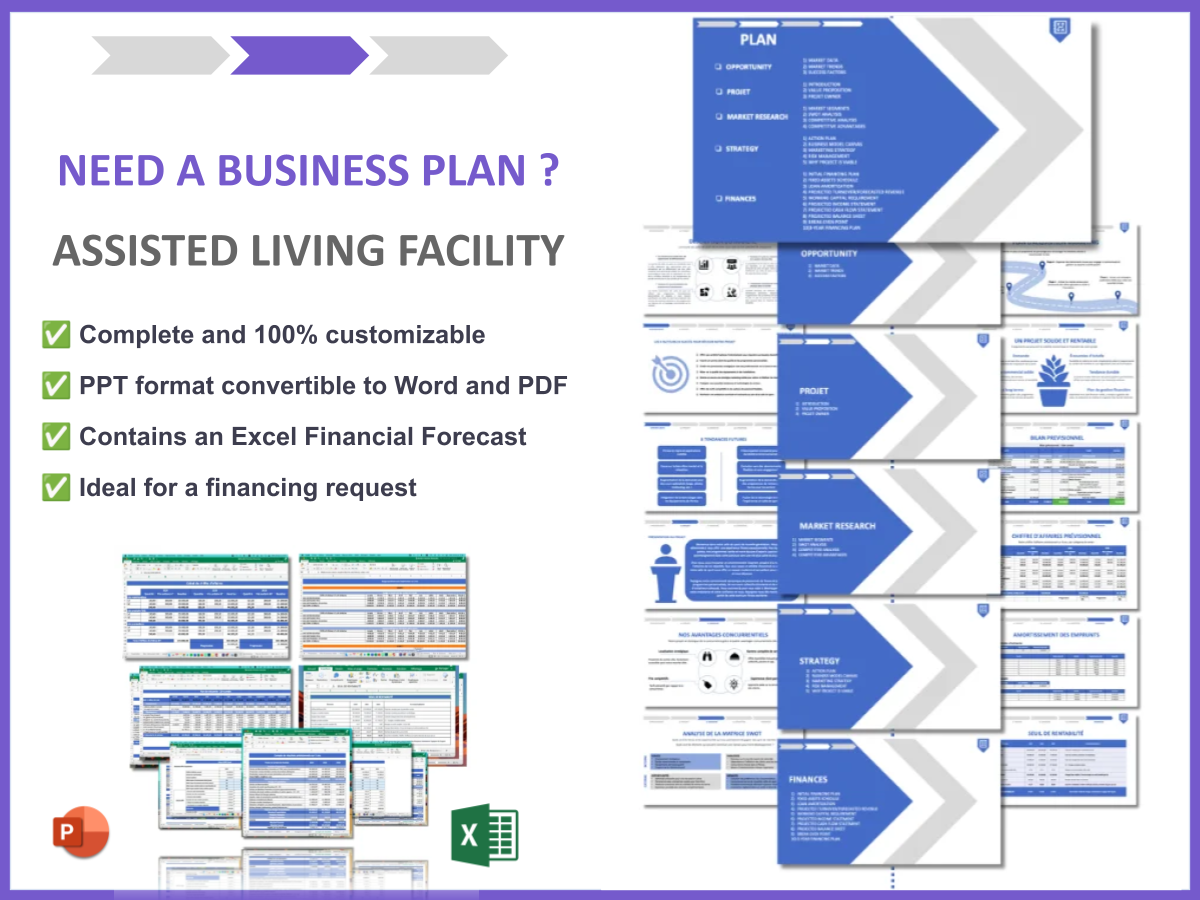Why Should You Have a SWOT Analysis for an Assisted Living Facility?
Have you ever considered how a simple analysis could transform your assisted living facility? You’re not alone! Many facility managers overlook the power of a SWOT analysis, missing out on valuable insights that can shape their operations. Did you know that nearly 60% of assisted living facilities fail within the first few years? A SWOT analysis can be a game-changer in ensuring your facility’s success.
A SWOT analysis stands for Strengths, Weaknesses, Opportunities, and Threats. It’s a strategic tool that helps you identify internal and external factors affecting your facility, allowing you to make informed decisions.
- Understand internal strengths and weaknesses.
- Identify external opportunities and threats.
- Use insights to improve service delivery.
- Enhance marketing strategies.
- Build a competitive advantage.
- Foster better staff engagement.
- Prepare for regulatory changes.
- Assess financial viability.
- Improve resident satisfaction.
- Inform long-term strategic planning.
How Do You Write a SWOT Analysis for an Assisted Living Facility?
Writing a SWOT analysis may seem daunting, but breaking it down into manageable parts makes it easier. Here’s how you can structure it.
Strengths
1. Unique Selling Proposition: Define what makes your facility stand out.
2. Quality Staff: Discuss the qualifications and experience of your team.
3. Location: Highlight the advantages of your facility’s location.
4. Amenities: Describe the unique amenities your facility offers.
Weaknesses
1. Limited Marketing: Explore how your marketing strategies may be lacking.
2. Staff Turnover: Address the impact of high staff turnover rates.
3. Outdated Facilities: Discuss any areas that need renovation or modernization.
4. Financial Constraints: Examine any budget limitations affecting operations.
Opportunities
1. Growing Demand: Discuss the increasing need for assisted living facilities.
2. Partnerships: Explore potential partnerships with healthcare providers.
3. Technology Adoption: Identify how tech can improve resident care.
4. Community Engagement: Highlight opportunities for community involvement and events.
Threats
1. Regulatory Changes: Discuss potential regulatory challenges.
2. Market Competition: Examine competitive pressures in your area.
3. Economic Downturns: Address how economic factors could impact your facility.
4. Public Perception: Consider how negative publicity could affect your reputation.
SWOT Example N°1 for Assisted Living Facility A
In this example, we will analyze Assisted Living Facility A to understand its SWOT analysis.
| SWOT | Analysis |
|---|---|
| Strengths | Highly trained staff with low turnover. |
| Weaknesses | Limited marketing reach. |
| Opportunities | Growing elderly population in the area. |
| Threats | Increasing competition from new facilities. |
- Staff quality enhances care.
- Marketing efforts need boosting.
- Demand is rising.
- Competing facilities could threaten market share.
This example demonstrates the importance of focusing on staff quality while recognizing marketing as a key area for improvement. With a growing population, there are opportunities to expand services and outreach.
SWOT Example N°2 for Assisted Living Facility B
Next, let’s take a look at Assisted Living Facility B to conduct its SWOT analysis.
| SWOT | Analysis |
|---|---|
| Strengths | Prime location near hospitals. |
| Weaknesses | Outdated technology. |
| Opportunities | Potential for telehealth integration. |
| Threats | Regulatory changes affecting operations. |
- Location is a significant advantage.
- Technology upgrades are necessary.
- Telehealth can enhance care.
- Stay informed about regulations.
Location is a key strength, but it’s crucial to update technology to remain competitive. Integrating telehealth services can provide a modern touch, addressing the growing demand for remote care.
SWOT Example N°3 for Assisted Living Facility C
Now, let’s analyze Assisted Living Facility C to understand its SWOT analysis.
| SWOT | Analysis |
|---|---|
| Strengths | Strong community ties. |
| Weaknesses | High staff turnover. |
| Opportunities | Workshops and events for residents. |
| Threats | Economic downturn affecting funding. |
- Community connections are a strong point.
- Addressing staff turnover is critical.
- Events can enhance resident satisfaction.
- Economic factors may limit growth.
Building community ties can significantly enhance your facility's reputation. However, addressing staff turnover should be a priority to maintain quality care during economic challenges.
SWOT Example N°4 for Assisted Living Facility D
Next, we will examine Assisted Living Facility D and conduct its SWOT analysis.
| SWOT | Analysis |
|---|---|
| Strengths | Modern facilities with advanced amenities. |
| Weaknesses | Limited budget for marketing. |
| Opportunities | Collaborations with local health organizations. |
| Threats | Negative online reviews impacting reputation. |
- Modern amenities attract residents.
- Marketing needs improvement.
- Collaborations can increase visibility.
- Manage online reputation proactively.
While modern facilities attract residents, investing in marketing is essential to reach potential clients. Collaborations with health organizations can improve your facility's image and outreach.
SWOT Example N°5 for Assisted Living Facility E
Now, let’s analyze Assisted Living Facility E to understand its SWOT analysis.
| SWOT | Analysis |
|---|---|
| Strengths | Experienced management team. |
| Weaknesses | Lack of diversity in services. |
| Opportunities | Expanding services to include memory care. |
| Threats | New legislation affecting care standards. |
- Experienced management is a plus.
- Service diversity needs expansion.
- Memory care services could tap into a new market.
- Stay updated on legislative changes.
An experienced management team is vital, but diversifying services can enhance your facility’s appeal. Memory care is a growing field, and staying informed about legislation is crucial for compliance.
SWOT Example N°6 for Assisted Living Facility F
Next, we will examine Assisted Living Facility F and conduct its SWOT analysis.
| SWOT | Analysis |
|---|---|
| Strengths | Strong financial backing. |
| Weaknesses | Limited marketing strategy. |
| Opportunities | Increased social media presence. |
| Threats | High competition in the area. |
- Financial resources provide stability.
- Marketing strategy needs refinement.
- Social media can enhance outreach.
- Competition is a constant concern.
Having strong financial backing is a significant advantage, but refining your marketing strategy and leveraging social media can help overcome competition in the market.
SWOT Example N°7 for Assisted Living Facility G
Now, let’s analyze Assisted Living Facility G to understand its SWOT analysis.
| SWOT | Analysis |
|---|---|
| Strengths | Comprehensive wellness programs. |
| Weaknesses | Aging infrastructure. |
| Opportunities | Renovation grants available. |
| Threats | Changes in health care laws. |
- Wellness programs enhance resident satisfaction.
- Infrastructure needs attention.
- Grants can assist with renovations.
- Monitor health care law changes.
Wellness programs are a great strength, but addressing infrastructure is vital for safety and satisfaction. Exploring renovation grants can alleviate financial burdens.
SWOT Example N°8 for Assisted Living Facility H
Finally, we will examine Assisted Living Facility H and conduct its SWOT analysis.
| SWOT | Analysis |
|---|---|
| Strengths | Positive resident feedback. |
| Weaknesses | Insufficient staff training. |
| Opportunities | Partnering with local universities for training. |
| Threats | Public perception from negative media. |
- Positive feedback is encouraging.
- Staff training needs improvement.
- Partnerships can enhance training quality.
- Manage public perception proactively.
Positive feedback is a good sign, but ensuring staff are well-trained is crucial for maintaining that reputation. Collaborating with universities for training can elevate staff capabilities.
SWOT Example N°9 for Assisted Living Facility I
Now, let’s analyze Assisted Living Facility I to understand its SWOT analysis.
| SWOT | Analysis |
|---|---|
| Strengths | Diverse resident activities. |
| Weaknesses | Limited transportation options. |
| Opportunities | Exploring shuttle services. |
| Threats | Local competition increasing. |
- Diverse activities enhance engagement.
- Transportation is a barrier for some residents.
- Shuttle services can increase accessibility.
- Competition is a constant threat.
Offering diverse activities is a strength, but addressing transportation issues can make your facility more appealing. Exploring shuttle services can also mitigate competition.
SWOT Example N°10 for Assisted Living Facility J
Finally, we will examine Assisted Living Facility J and conduct its SWOT analysis.
| SWOT | Analysis |
|---|---|
| Strengths | Strong family involvement in care. |
| Weaknesses | Limited digital presence. |
| Opportunities | Building a website and online community. |
| Threats | Increased regulatory scrutiny. |
- Family involvement is a strong asset.
- Digital presence needs development.
- An online community can enhance engagement.
- Regulatory scrutiny is a concern.
Family involvement is fantastic for resident care, but building a strong digital presence can attract new residents. Staying informed about regulations is crucial for compliance.
Key Takeaways from Conducting a SWOT Analysis for Assisted Living Facilities
In summary, conducting a SWOT analysis for your assisted living facility can provide invaluable insights. By understanding your strengths, weaknesses, opportunities, and threats, you can make informed decisions that enhance your facility’s success. Now is the time to act—take the insights from this analysis and implement changes that will improve your operations, marketing, and resident satisfaction.
If you’re looking for a comprehensive guide to start your journey, consider using this business plan template for Assisted Living Facility. Additionally, you may find valuable information in our articles on How to Establish an Assisted Living Facility? and How to Develop an Assisted Living Facility Marketing Plan? With Example. These resources can provide you with essential strategies and insights to ensure your facility thrives.
Frequently Asked Questions
What is a SWOT analysis?
A SWOT analysis is a strategic tool that identifies the Strengths, Weaknesses, Opportunities, and Threats related to a business or project.
How can a SWOT analysis benefit my assisted living facility?
This analysis helps pinpoint areas for improvement and identifies growth opportunities while addressing potential risks and challenges.
How often should I perform a SWOT analysis?
It’s advisable to conduct a SWOT analysis regularly, at least once a year, or whenever significant changes occur in your facility or the market.
What are common weaknesses in assisted living facilities?
Common weaknesses include high staff turnover, limited marketing efforts, and outdated facilities that need modernization.
How can I leverage opportunities identified in a SWOT analysis?
Opportunities can guide strategic decisions regarding service expansions, marketing improvements, or establishing partnerships with healthcare providers.
What threats should I be aware of?
Be mindful of increasing competition, regulatory changes, and economic downturns that could affect your operations and financial stability.
Can a SWOT analysis improve resident satisfaction?
Yes, by addressing identified weaknesses and leveraging strengths, you can enhance the overall experience for residents in your facility.
What role does staff play in a SWOT analysis?
Staff input can provide valuable insights into strengths and weaknesses and is crucial for implementing changes based on the findings.
How can technology be integrated into a SWOT analysis?
Technology can present opportunities for improvement but may also highlight weaknesses if your facility is not up-to-date with current advancements.
Is it necessary to involve staff in the SWOT analysis process?
Yes, involving staff can provide diverse perspectives and promote a sense of ownership in implementing the findings from the analysis.







